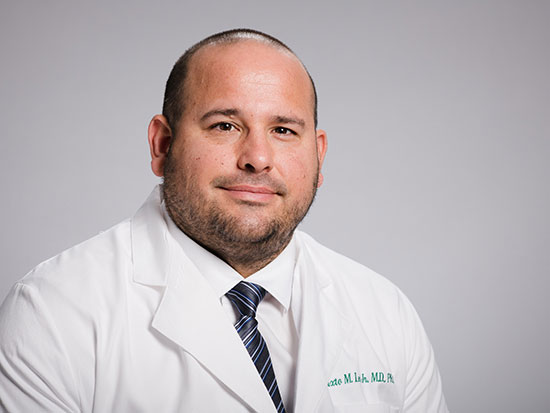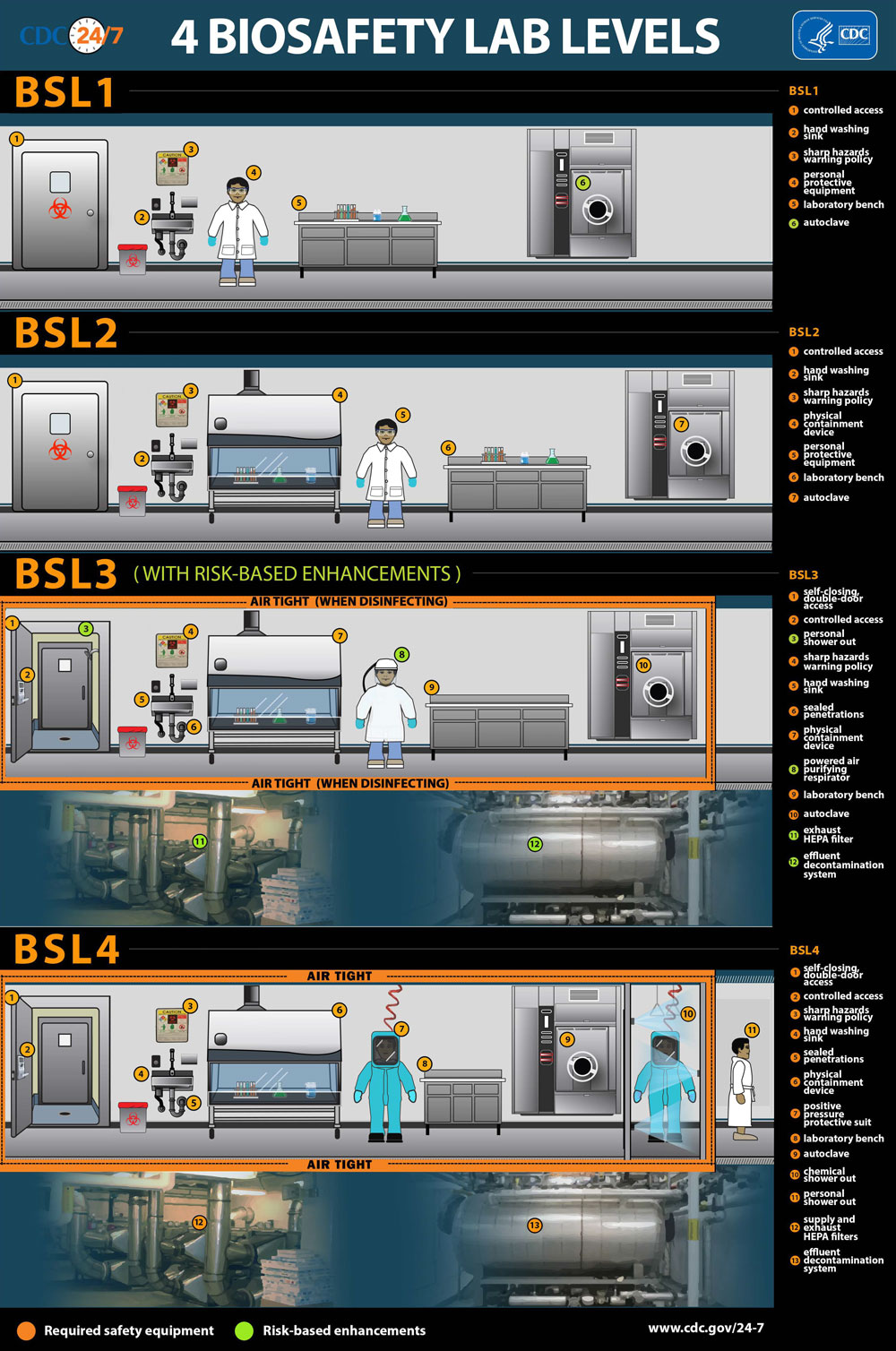 By Matt Windsor
By Matt Windsor
Sixto M. Leal Jr., M.D., Ph.D., assistant professor in the Department of Pathology and director of Clinical Microbiology at UAB Hospitals and the UAB Fungal Reference Laboratory, has been appointed as the inaugural scientific director for UAB’s Southeastern Biosafety Laboratory Alabama Birmingham, or SEBLAB. Leal’s appointment will begin April 1, 2022, and he will retain his other roles at UAB.
SEBLAB is one of 12 BSL-3, or biosafety level 3, Regional Biocontainment Laboratories supported by the National Institute of Allergy and Infectious Diseases. The labs were built using grants awarded in the wake of the terrorist attacks of Sept. 11, 2001, and subsequent anthrax attacks. Their mission is to provide surge capacity for diagnostics and analysis in the event of a bioterrorism incident and to lead investigation into vaccines and other treatments for infectious diseases. SEBLAB was completed in 2008 and became fully operational in 2009. Ever since, “it has been a valuable part of our university, conducting research with highly infectious pathogens such as tuberculosis and equine encephalitis,” said Christopher Brown, Ph.D., vice president of Research for UAB. “Our work has been important and has moved the field forward; Dr. Leal will take the facility’s impact, and our researchers’ impact, to a new level.”
Setting the scientific vision for SEBLAB
SEBLAB, which opened in 2009, “has been a valuable part of our university, conducting research with highly infectious pathogens such as tuberculosis and equine encephalitis,” said Christopher Brown, Ph.D., vice president of Research for UAB. “Our work has been important and has moved the field forward; Dr. Leal will take the facility’s impact, and our researchers’ impact, to a new level.”
Any research with SARS-CoV-2, the virus that causes COVID-19, must be performed in a BSL-3 facility, per federal regulations. “You can’t study COVID anywhere else,” said David Schwebel, Ph.D., associate vice president for Research Facilities and Infrastructure in the Office of Research. In SEBLAB and other BSL-3 facilities, researchers wear full-body protection suits, and the buildings themselves have extensive air handling equipment and security measures to prevent any transfer of infectious material to the surrounding environment, Schwebel explains.
Several researchers at UAB, including the labs of Fran Lund, Ph.D., Kevin Harrod, Ph.D., Steven Rowe, M.D., and Leal himself, are actively involved in SARS-CoV-2 research in SEBLAB. UAB also has received contracts for research from federal agencies, diagnostic companies and pharmaceutical companies. The work includes novel drug discovery, vaccine testing, and basic studies of why SARS-CoV-2 is so pathogenic and how it affects cilia in the respiratory tract. “A research scientist who is involved in this work can enhance the scientific vision for how we use this amazing facility,” Schwebel said. “What equipment do we need to invest in, can we recruit new faculty to UAB, and which projects should we emphasize? This is what Sixto will focus on.”
Story continues below box
Biosafety levels explained
The Centers for Disease Control and Prevention designates microbiology laboratories based on the risk involved with the microbes being studied. Biosafety level 1 (BSL-1) labs are for low-risk microbes, such as non-pathogenic E. coli; BSL-4 labs are for highest-risk microbes, such as the Ebola or Marburg viruses. BSL-3 labs handle dangerous pathogens such as the bacteria that causes tuberculosis and SARS-CoV-2, the virus that causes COVID-19. For a visual depiction of the precautions taken at each biosafety level, see the CDC infographic below.

During the COVID pandemic, the existing close relationships among UAB and the other regional biocontainment laboratories have grown even tighter, Brown notes. “We are talking with the NIH and our respective congressional delegations to help them realize that these are readiness treasures as we prepare for the next phases of COVID and the next pandemic after that,” Brown said. “Sixto will help us explore and facilitate team science both at UAB and throughout the regional biocontainment laboratory network.”
“A research scientist who is involved in this work can enhance the scientific vision for how we use this amazing facility,” said David Schwebel, Ph.D., associate vice president for Research Facilities and Infrastructure in the Office of Research. “What equipment do we need to invest in, can we recruit new faculty to UAB, and which projects should we emphasize? This is what Sixto will focus on.”
Leal has led SARS-CoV-2 testing during the COVID pandemic for UAB Hospital and beyond. He and his team in the Fungal Reference Laboratory developed several innovations to expand and accelerate testing results in the face of severe scientific supply shortages in spring and summer 2020 and the widespread testing of students as UAB and universities across the state returned to in-person education in fall 2020. With the rise of COVID variants in 2020 and 2021, Leal has led efforts at UAB to detect these new forms of SARS-CoV-2 through genetic sequencing, which takes place safely in the UAB Fungal Reference Lab’s own BSL-2 facilities. These projects earned Leal recognition on the Pathologist magazine’s 2021 Power List.
“My own personal research has been moving in the BSL-3 direction,” Leal said. He is a mycologist (an expert in the study of fungi) and has developed a research interest in COVID-associated pulmonary aspergillosis, known as CAPA, a serious infection caused by widespread Aspergillus fungi. Worldwide, about 10% of patients in the intensive care unit with severe COVID exhibit positive laboratory testing consistent with CAPA, with mortality rates exceeding 60%, Leal notes. His lab also studies another devastating fungal infection linked to COVID known as coronavirus disease-associated mucormycosis, or CAM, caused by Mucorales molds. “These fungi are everywhere,” Leal said. (The green mold on bread is Aspergillus, he explains. If you cut a tomato and leave it in the fridge and start to see hairy extensions, those are Mucorales molds.) “In the SEBLAB, we are trying to decipher the mechanism or mechanisms by which SARS2 promotes secondary mold infection in otherwise immunocompetent hosts.”
Synergizing faculty research efforts
“I have a research program in the SEBLAB and collaborate extensively with the SEBLAB team,” Leal said. “It is clear that the scientific director position will help make informed scientific decisions about what instruments to purchase, where to place them and how to synergize efforts in the SEBLAB.”
“I have a research program in the SEBLAB and collaborate extensively with the SEBLAB team,” said Sixto M. Leal Jr., M.D., Ph.D., assistant professor in the Department of Pathology and director of Clinical Microbiology at UAB Hospitals and the UAB Fungal Reference Laboratory. “It is clear that the scientific director position will help make informed scientific decisions about what instruments to purchase, where to place them and how to synergize efforts in the SEBLAB.”
In addition to these efforts, Leal will be involved in recruiting new faculty to UAB who specialize in working with high-level containment pathogens. He also hopes to introduce new pilot grants to incentivize UAB researchers to explore BSL-3 projects and facilitate their transition to the unique aspects of BSL-3 work.
Getting into the SEBLAB requires overcoming the “activation energy” around a biocontainment lab, Leal acknowledged. “One barrier is the initial thought and eagerness of established researchers to enter into a new area of research requiring special measures in place to ensure biosafety. A second major hurdle is the requirement for specially trained personnel,” he said. “There is a lot of training involved, FBI fingerprinting, tutorials, exams, protocol reviews and one-on-one confirmation of proper protocol performance. On average, it takes about six months to get into the workspace.”
Potential solutions include pilot grants and/or having technologists available in the SEBLAB “who can perform preliminary experiments for principal investigators who are interested in getting into the BSL-3 space, to show that this is doable,” Leal said.